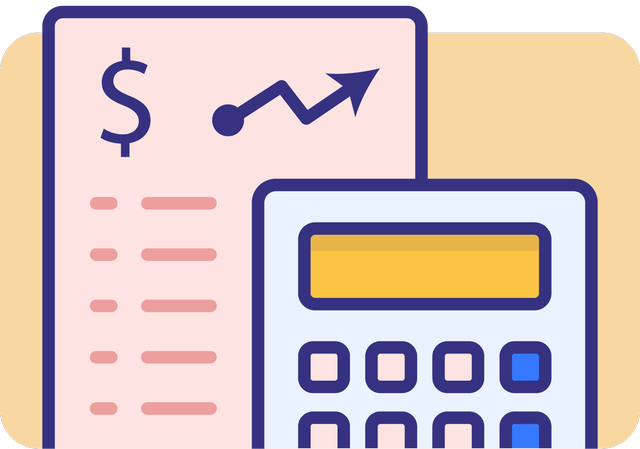What is a statement of account?
Think of it as a polite way to say, "Here’s what you’ve been invoiced, here’s what you’ve paid, and – spoiler alert – here’s what you still owe."
It’s not an invoice. An invoice is a one-time thing. A statement of account is the big picture – a rolling record of invoices, payments, credits, and balances. It’s like a playlist of everything that’s happened financially between two parties.
Most businesses send them out at the end of each month. But you can also send one when a client casually forgets to pay and you want to nudge them – nicely.
Why bother with a statement of account?
Good question. Here’s what they help with:
- 🔍 Clarity: Everyone knows where things stand. No surprises.
- 🔔 Reminders: Without sounding aggressive, it says, “Hey, this invoice is still hanging around.”
- 🗂️ Records: Handy during tax season. Or when auditors come knocking.
- ✅ Proof: If there’s ever a disagreement, it helps show who paid what (and when).
If you work with multiple clients across borders – hello, Luxembourg – you want clear records. Currency switches, VAT issues, different billing cycles… It adds up. This helps.
What’s in a typical statement of account?
You don’t need to overcomplicate it. A standard statement of account usually includes:
- Client details (name, address, email – basically what’s on your invoice)
- Date of the statement
- Period covered (like Jan 1 to Jan 31)
- List of transactions: invoice references, dates, payments, credits
- Amounts owed and paid
- Current balance (this is the number that matters)
| Date | Reference | Description | Debit (€)/ Credit (€) | Balance (€) |
| 01/05/2024 | INV-2201 | Web design fee | +2,000.00 | 2,000.00 |
| 05/05/2024 | PMT-1357 | Payment received | -1,000.00 | 1,000.00 |
| 10/05/2024 | INV-2205 | Hosting renewal | +500.00 | 1,500.00 |
| 15/05/2024 | CRN-2207 | Credit note | -100.00 | 1,400.00 |
When should you send a statement of account?
You’ve got options. Monthly is standard, especially if you bill regularly. But:
- You can send it any time a client asks
- You can use it as a gentle reminder
- You can send one when wrapping up a project, just to confirm the books are closed
It’s also good form to send a statement before chasing unpaid invoices. It keeps the tone friendly and professional.
How to create a statement of account without losing your mind
- Open your accounting software.
- Export the client’s transactions.
- Check everything. Typos love invoices.
- Format it clearly. Totals, dates, references.
- Email it or share via your client portal.
Want this done faster? Try EazyBiz accounting service. Seriously, we’ve automated most of it.

Expert Accounting Help | EasyBiz
Payroll services and accounting from €90. Expert team ready to help.
Learn moreA couple of examples of how statements of account are used
Example 1: A training company with multiple monthly clients
Let’s say you run a training company and provide courses to corporate teams. You invoice Company A every month for three different courses – leadership, soft skills, and compliance. Each course is priced differently, and the company prefers to pay quarterly.
Here’s how your statement of account might look at the end of March:
| Date | Reference | Description | Debit (€)/ Credit (€) | Balance (€) |
| 05/01/2024 | INV-401 | January Training Sessions | +1,500.00 | 1,500.00 |
| 05/02/2024 | INV-402 | February Training Sessions | +1,500.00 | 3,000.00 |
| 05/03/2024 | INV-403 | March Training Sessions | +1,500.00 | 4,500.00 |
| 25/03/2024 | PMT-6001 | Quarterly payment received | -4,500.00 | 0.00 |
You send this along with a friendly email: “Just a summary of Q1 – thanks for staying on top of payments!” Everyone stays aligned, and no one has to chase anyone.
Example 2: A furniture wholesaler managing different customer payment terms
Suppose you run a small wholesale furniture business and have customers who pay on different terms – some net 30, some net 60. One customer places several orders in a month but only pays once every two months.
Your statement of account will help both of you keep track:
| Date | Reference | Description | Debit (€)/ Credit (€) | Balance (€) |
| 03/01/2024 | INV-710 | An order for office desks | +3,200.00 | 3,200.00 |
| 10/01/2024 | INV-711 | Conference chairs order | +2,800.00 | 6,000.00 |
| 05/02/2024 | PMT-901 | Partial payment received | -3,000.00 | 3,000.00 |
| 14/02/2024 | INV-712 | Lounge furniture set | +1,500.00 | 4,500.00 |
You include a note: “Your net 60 terms cover up to March 15. Here’s where we stand as of today.” You’ve just saved yourself from an awkward back-and-forth.
Conclusion
A statement of account may sound like yet another accounting document, but it’s actually one of the most useful ones. It keeps your client relationships smooth, your records clean, and your cash flow in check. Whether you run a freelance business, manage corporate training, or ship furniture across Luxembourg, having a clear summary of who owes what (and when) is just good business.
If you’re still managing this manually or using spreadsheets to build statements from scratch, please stop. Tools exist. They’ll save you time, reduce errors, and help you get paid faster. And if you need help automating the tedious tasks, our accounting service is here to assist you.
Start sending statements that get read – and paid.



